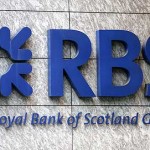Gold fell to the lowest since October 17 after the Institute for Supply Management reported that the U.S. service sector growth quickened in October from a month earlier, confounding analysts expectations for a slower expansion. The report added to a recent string of upbeat data from the U.S., which fueled speculations the Federal Reserve might begin paring its monthly bond purchases earlier than projected, despite recent comments by senior central bankers who called for patience.
On the Comex division of the New York Mercantile Exchange, gold futures for settlement in December traded at $1 309.60 per troy ounce at 15:46 GMT, down 0.39% on the day. The contract plunged to a session low of $1 305.80, the weakest level since October 17, and extended its weekly decline to nearly 0.5%.
Gold continued to edge lower after an industry report showed on Tuesday that the U.S. service sector expanded for the 46th consecutive month in October, indicating the 16-day partial government shutdown had little effect on the private sector. The Institute for Supply Management said that its Non-Manufacturing PMI rose to 55.4 in October, confounding analysts projections to slow to 54.0 from Septembers reading of 54.4. Despite last months expansion being below Augusts 2-1/2-year low, the upbeat reading fueled speculations that the U.S. economy is faring well despite the political wrangling in Washington we saw last month.
The report also showed that ISMs Business Activity Index rose to 59.7, up from 55.1 in September, marking growth for a 51st consecutive month. The forward looking New Orders Index however fell for a second consecutive month to 56.8, down from 59.6 in September. Despite the 16-day partial government shutdown, the Employment Index rose by 3.5 to 56.2, bringing it close to Augusts six-month high.
The Institute for Supply Management also said respondents comments are mixed with the majority reflecting an uptick in business. Companies from the sectors of professional, scientific and technical services replied they experienced an increase in the level of interest in our services, job awards and professional services placements. Accommodation and food services firms however noted the economy continues to be a challenge with consumer fear as a result of the government partial shutdown. According to finance and insurance companies, business activities were stable compared to previous month.
The upbeat data boosted further the U.S. dollar, which was previously supported by a weaker euro. The December contract traded at 80.84 at 15:46 GMT, up 0.23% on the day. Prices shifted in a days range between 80.90 and 80.57. The U.S. currency gauge fell by 0.2% on Monday, capping six days of gains, but rose back to positive weekly territory following Tuesdays rebound.
Todays data added to ISMs report from last week which showed manufacturing activity in the world’s biggest economy rose at the fastest pace in two and a half years. The ISM Manufacturing index surged to 56.4, the highest since April 2011, defying analysts’ projection for a drop to 55.0 from September’s reading of 56.2.
Gold sentiment was also dampened as investors refrained from taking big positions ahead of this week’s policy meetings in Europe on Thursday and the release of highly anticipated U.S. data. On Thursday, the preliminary reading of the U.S. Q3 GDP growth may show a smaller expansion compared to the preceding three months. Personal Consumption Expenditures probably fell in the third quarter, while core consumer spending is expected to have advanced.
On Friday, October’s non-farm payrolls are projected to have further eased, while the unemployment rate likely inched up to 7.3%, according to analysts’ expectations. Personal income and personal spending are projected to have risen at a slower pace from a month ago. The preliminary reading of the Thomson Reuters/University of Michigan Consumer Sentiment Index may show a rebound to 74.5 in November, up from 73.2 in October.
A better than expected non-farm payrolls report however will fuel speculations the Federal Reserve may commence scaling back its monthly bond purchases earlier than expected. Even if readings match expectations however, the central bank is broadly expected to trim its monetary easing program early next year, most likely in March, which leaves market players bearish in the mid- and long-term.
Despite the recent unexpectedly positive economic readings, some contradicting statements by officials further spurred uncertainty. St. Louis Fed President James Bullard, one of Fed’s stimulus supporters, told CNBC television yesterday the central bank shouldnt rush tapering its monthly bond purchases because of low inflation, which has been running well below policy makers’ 2% official target. Apart from him, two other Fed officials who vote on policy this year, Governor Jerome Powell and Boston Fed President Eric Rosengren, indicated yesterday the central bank may refrain from tapering for some time.
These comments came after Federal Reserve Bank of Dallas President Richard Fisher, one of the central bank’s quantitative easing program opponents, said that the Federal Reserve should put an end to its bond purchases as soon as possible. Fisher said he wouldn’t rule out backing a deceleration of the program by March, depending on the economic conditions.





